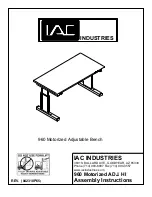
DL4300 Appliance
Managing Core SQL attachability settings
65
Option
Description
Page orientation
This option controls the page orientation for exported
reports. The default orientation is Portrait. You can
choose from the following layout options:
•
Portrait
•
Landscape
3. To change any of the settings for Reports, click in the appropriate setting field.
The setting field appears as a configurable drop-down menu.
4. Click the drop-down menu, and select one of the values available.
For example, in the Font field, click Times New Roman.
5.
For each setting, when satisfied with your changes, click
to save the change and exit edit mode, or
click
to exit edit mode without saving.
The option you selected now appears as the new setting for the selected Reports parameter.
Parent topic
Managing Core SQL attachability settings
SQL attachability checks occur as part of the Rapid Recovery nightly jobs. To ease licensing costs, Rapid
Recovery gives you two options for performing attachability checks: using a licensed instance of SQL Server
installed on the Rapid Recovery Core machine or using the instance of SQL Server already installed on your
protected machine. This second option is now the default setting. However, if your protected machine is already
exerted during the time when the nightly jobs occur, consider performing the checks with an instance of SQL
Server on the Core.
In summary, the process of managing Core SQL attachability settings involves the following tasks:
•
Mount the latest recovery point for protection groups containing databases.
•
Connect to the database from SQL Server.
•
Open the database.
•
Close the database.
•
Dismount the recovery point.
To enable this nightly check, specify a SQL Server instance to use to perform
attachability checks for SQL Server databases on protected machines.
NOTE:
This option does not appear if you are not protecting a SQL Server in your Core.
To configure the Core to perform SQL attachability checks as part of the nightly jobs, complete the following
steps.
















































